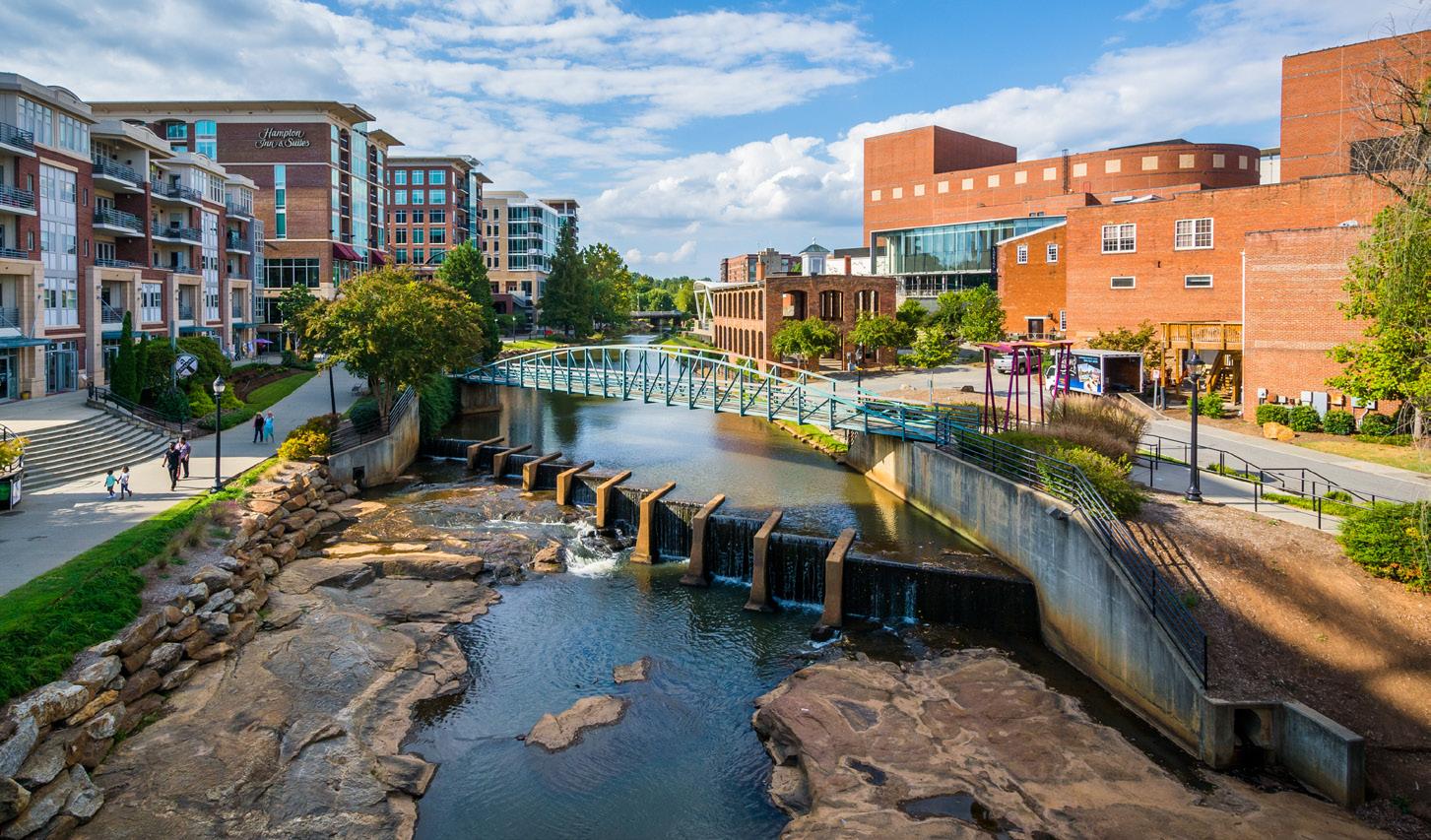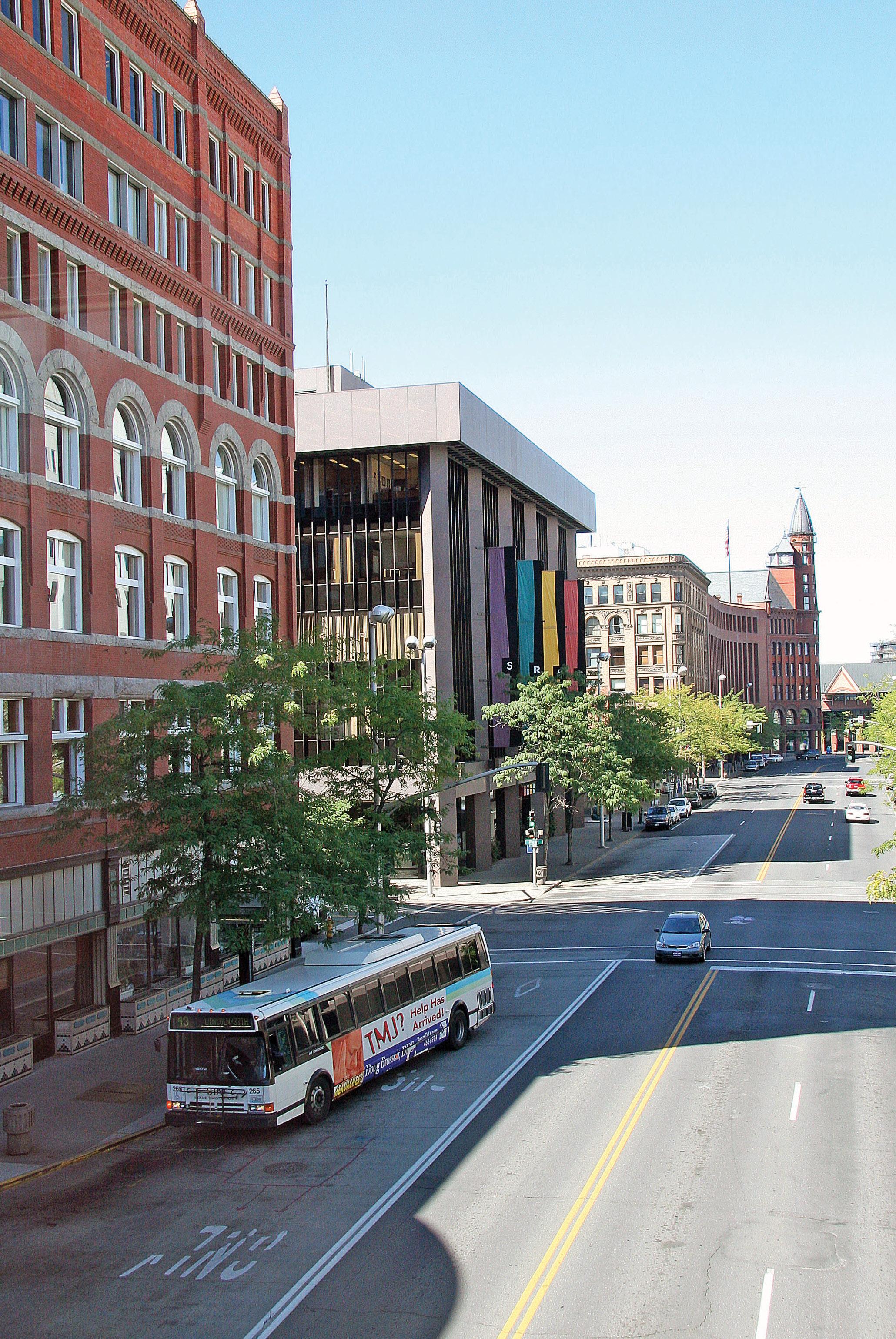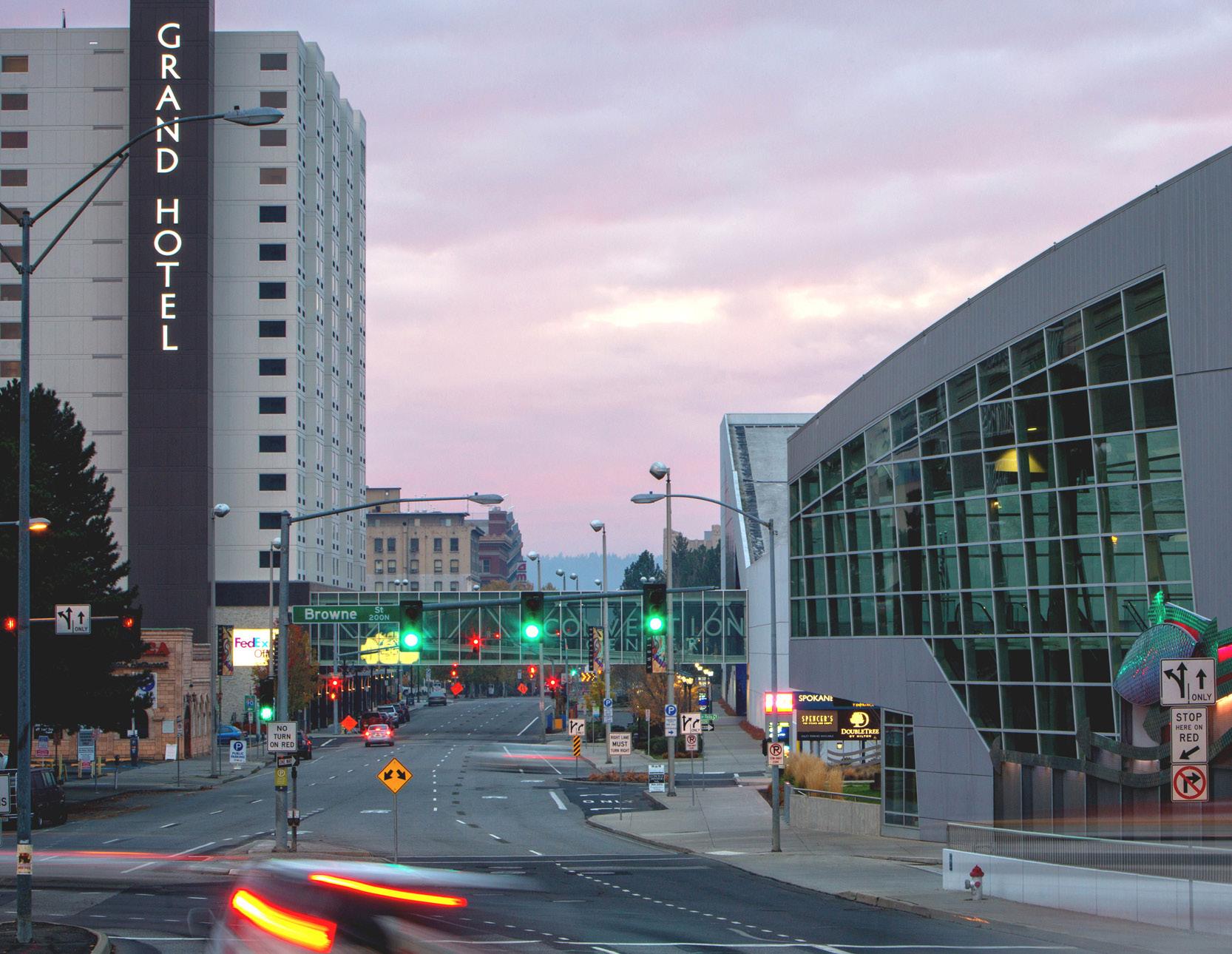
9 minute read
SWOT ANALYSIS
CASE STUDY
Advertisement
Location: Greenville, South Carolina
More Information: Racial Equity Index Building on the momentum of the nationwide social justice movements in the summer of 2020, the Greenville Racial Equity and Economic Mobility Commission (REEM) was created to identify and address systemic racial barriers in Greenville County, South Carolina. REEM is headed by United Way of Greenville County (UWGC), the Greenville Chamber of Commerce, and the Urban League of the Upstate. To better understand the role of race in economic mobility, UWGC released the Greenville County Racial Equity Index in June 2020. Through collaborative partnerships with local community and economic development professionals and institutions, REEM has identified five focus areas: income and wealth, criminal justice, education and workforce development, health and wellness, and communitywide learning. Each area has a corresponding subcommittee staffed by community and business leaders, totaling more than 30 people. REEM is working on a community engagement strategy (informed by focus groups, surveys, and community dialogs) that will provide action-oriented recommendations for each focus area to be carried out by the appropriate subcommittee. One policy change that has already come out of the Criminal Justice Committee is the duty-to-intervene obligation for police officers who witness colleagues using excessive force. Additionally, the police force will provide implicit bias training for all officers. 3.4 Strengthen STEM education and culturally competent and trauma-informed programs in PreK-12 schools in the Spokane region. 3.4.1. Support Spokane STEM’s existing work to enhance STEM education opportunities for all youth in the region by increasing the number of students pursuing and achieving success in STEM careers through collaboration with business, early learning, PreK-12, higher education, and community leaders (see Action 2.5.5). • Elevate the Innovia Foundation’s promise scholarship initiative to ensure that every child has opportunity and access to their career or college of choice. 3.5 Strengthen the regional talent pipeline by aligning efforts with current and future workforce needs and by ensuring that economic opportunity is equally accessible to all residents regardless of race, ethnicity, gender, sexual orientation, or other identity (see Action 2.5.4). 3.5.1. Focus efforts on underserved and at-risk youth by coordinating efforts with nontraditional economic development organizations and connecting opportunity youth to programs and resources like those offered through Next Generation Zone and Legacy Learners LLC. 3.5.2. Expand career exploration activities connecting students and adults to job opportunities in the region. • Continue to sponsor and amplify outreach about career fairs and hiring events. 3.5.3. Uplift BIPOC workers by connecting them with clear career pathways that offer workers earn-and-learn initiatives, like stipends, paid work experience, internships, or on-the-job training (see Strategy 1.1). 3.5.4. Invest resources and capacity into programs that expand reentry pathways to employment and reintegration of formerly incarcerated individuals, while reducing system entry and recidivism by fully implementing proven criminal justice system reforms. 3.5.5. Support organizations, such as the Resource Center of Spokane County, that address barriers to employment, including childcare and mental health (see Action 4.5.3). 3.6 Prioritize digital equity initiatives by ensuring equal access to broadband and supporting digital literacy programs for underserved communities and businesses in both rural and urban communities throughout Spokane
County. 3.6.1. Target broadband expansion efforts in neighborhoods with weak service zones (see Action 1.5.1) and support publicly owned infrastructure.

3.6.2. Support digital literacy programs in low-income communities by improving access to broadband-ready devices and services for residents and businesses (see Action 1.4.3), with an emphasis on programs led by members of those populations and communities. 3.7 Expand public contracting opportunities for BIPOC owned businesses, including support and mentorship programs to alleviate procedural barriers. 3.7.1. Conduct disparity studies to better understand existing public procurement and contract awards by demographic characteristics and increase diversity. • Use findings from the disparity study as a baseline metric. • Ensure transparent reporting and metric development to track progress. 3.7.2. Support existing business groups geared toward BIPOC business owners to create a framework for a mentorship program to assist businesses pursuing public contracts. 3.7.3. Promote and adopt practices around procurement localization and diversification, including unbundling contracts and the development of a diverse/small business supplier database (see Action 1.2.2).
Image of Fresh Soul, a part of the Carl Maxey Center's Black Business and Professionals network, a member organization of the Live Local INW Coalition by Aaron Theisen courtesy of Visit Spokane
GOAL 4. CONNECTIVITY
Promote the interconnectedness of Greater Spokane and drive cross-sector partnerships to align efforts that advance economic opportunity for all.

Image of Kendall Yards Night Market by Libby Kamrowski courtesy of Visit Spokane The fourth goal area for the CEDS is centered around the concept of connectivity, a concept that encompasses investments needed to grow the region’s creative economy, improve communication channels, and support physical infrastructure development. This goal area also lays the groundwork to support other aspects of economic development, including fostering resilient economic growth and developing a strong quality of place. In order to grow the region’s creative economy, enhanced alignment is needed between Greater Spokane’s public and private sector programs, organizations, and nontraditional economic development partners to improve synergies and address the region’s most pressing issues. Furthermore, the goal of connectivity extends beyond traditional infrastructure investments, like transportation improvements, to include broadband expansion that can support innovation and investments in early childhood education to support working parents. As the lines between economic development and community development blur, enhancing regional infrastructure will be essential to connect people and businesses to the tools they need to thrive. To amplify the collective impact of regional partners, the opportunity remains to break down silos and work collaboratively to align efforts that advance economic opportunity for all Spokane residents.

STRATEGIES AND ACTIONS
4.1 Identify and prioritize infrastructure investments and projects to enhance existing developments and stimulate new projects, especially in underserved and rural communities (see Actions 1.3.3 and 3.3.3). 4.1.1. Facilitate the rapid deployment of telecommunications and broadband networks in growing commercial centers to meet business needs, including small industrial parks (see Action 1.5.3). 4.1.2. Install necessary utility structures in growing commercial centers, such as the West Plains Regional Airport area, the Hillyard neighborhood, and Spokane Valley’s Northeast Industrial Area. 4.1.3. Focus “complete streets” investments, including sidewalks and street lighting, in historically underserved areas and downtowns (see Action 4.3.1). 4.1.4. Prioritize transit-oriented development, including nonmotorized routes, to connect residential and commercial areas.
4.2 Bolster and continue to align the network of entrepreneurial support organizations and resources (see Action 2.2.1). 4.2.1. Annually update the GSI StartUp Spokane’s Knowledge Network, an asset map of entrepreneurial support resources, and make it publicly available. 4.2.2. Support youth entrepreneurship programs to help Spokane’s young residents cultivate an entrepreneurial spirit, building a community culture of innovation.
4.2.3. Grow the region’s creative economy by deepening ties among the public sector, education, and the private sector. 4.3 Create vibrant and inclusive communities by investing in the resources needed to activate public spaces, support arts and culture, and expand outdoor recreation opportunities for all (see Action 2.2.3). 4.3.1. Invest in the infrastructure needed to stimulate public spaces, such as Wi-Fi and sidewalks (see Action 4.1.3). 4.3.2. Identify park and green space development opportunities, including bike paths and hiking trails, to increase the percentage of residents in the region who live within a 10-minute walk to a public space. • Increase public green spaces that connect retail sites with surrounding sites along major commercial corridors and adjacent neighborhoods. 4.3.3. Encourage and promote public outdoor events, such as art shows or farmers’ markets, that draw people to downtowns and commercial districts.
4.4 Develop and implement a method to proactively involve community-based organizations to provide input on economic development initiatives, to improve access to other community leaders, and to initiate continuous improvement of the THRIVE Spokane CEDS (see Strategy 3.1). 4.4.1. Host biannual community connections to provide a time and space for community-based organizational leaders to meet with economic development partners, share common pain points, and identify collaborative solutions.
CASE STUDY
The Providence Foundation
Location: Providence, Rhode Island
More Information: The Providence Foundation
The Providence Foundation (PF) was established as a nonprofit in the mid1970s to promote economic development in downtown Providence, Rhode Island, through policy advocacy, land use development and management, community and stakeholder engagement, and business attraction and recruitment. The foundation values diversity and represents the interests of businesses, property owners, residents, and nonprofit institutions in the area. Additionally, PF recognizes downtown Providence’s outsized and integral role in the state’s larger economy but does not limit development activities to only the downtown area. To further its mission, PF created the Downtown Providence Parks Conservancy (DPPC) as an operating division that seeks to preserve and develop the city’s historic downtown through the creation and use of public spaces. The foundation’s executive director is obligated to serve simultaneously as the executive director of DPPC. PF is an active partner in supporting Providence’s nascent innovation district and marketing downtown businesses and cultural programming through a partnership with the Downtown Improvement District. Altogether, PF leverages public-private partnerships to diversify funding sources for redevelopment initiatives that foster robust economic ecosystems.

4.5 Invest in high quality childcare through public-private partnerships to support Spokane’s working parents and ensure the region’s youngest members are school ready. 4.5.1. Establish a fund by private businesses that invests in childcare service networks to support their employees. 4.5.2. Expand business resources geared toward local small businesses in the childcare and early education industry. These resources can include customized business training and mentorship to improve quality, along with materials to strengthen the talent pipeline for early learning educators. 4.5.3. Identify childcare deserts,7 especially in high poverty areas, to target areas with the most critical needs (see Action 3.5.5). 4.6 Prioritize investment in multimodal and intermodal transportation and freight mobility systems infrastructure to maximize connectivity and capability that supports growth of the Spokane regional economy. 4.6.1. Support and advocate for increased investments in modal connectivity to increase capacity, efficiency, and optionality for the movement of goods and people. 4.6.2. Continue to advocate for new and increased investments in regional transportation infrastructure that supports business growth with a focus on target sectors to stimulate job growth, such as facilities at Spokane International Airport to accommodate growth in passenger and cargo activity. 4.6.3. Advocate for transportation investments that support and enhance the efficient movement of the workforce for improved access to education, training, and employment centers. 4.6.4. Develop a unified transportation priority list that advances projects based on readiness for construction through the area’s designated transportation planning organization, the Spokane Regional Transportation Council, to maximize funding opportunities for maintaining, improving, and expanding the regional transportation system.

7 “US Child Care Deserts” data visualization. Center for American Progress.
Image of Spokane Transit Authority bus in the University District courtesy of Visit Spokane
APPENDIX A. TARGETING ANALYSIS
Image of Spokane Convention Center courtesy of Visit Spokane

